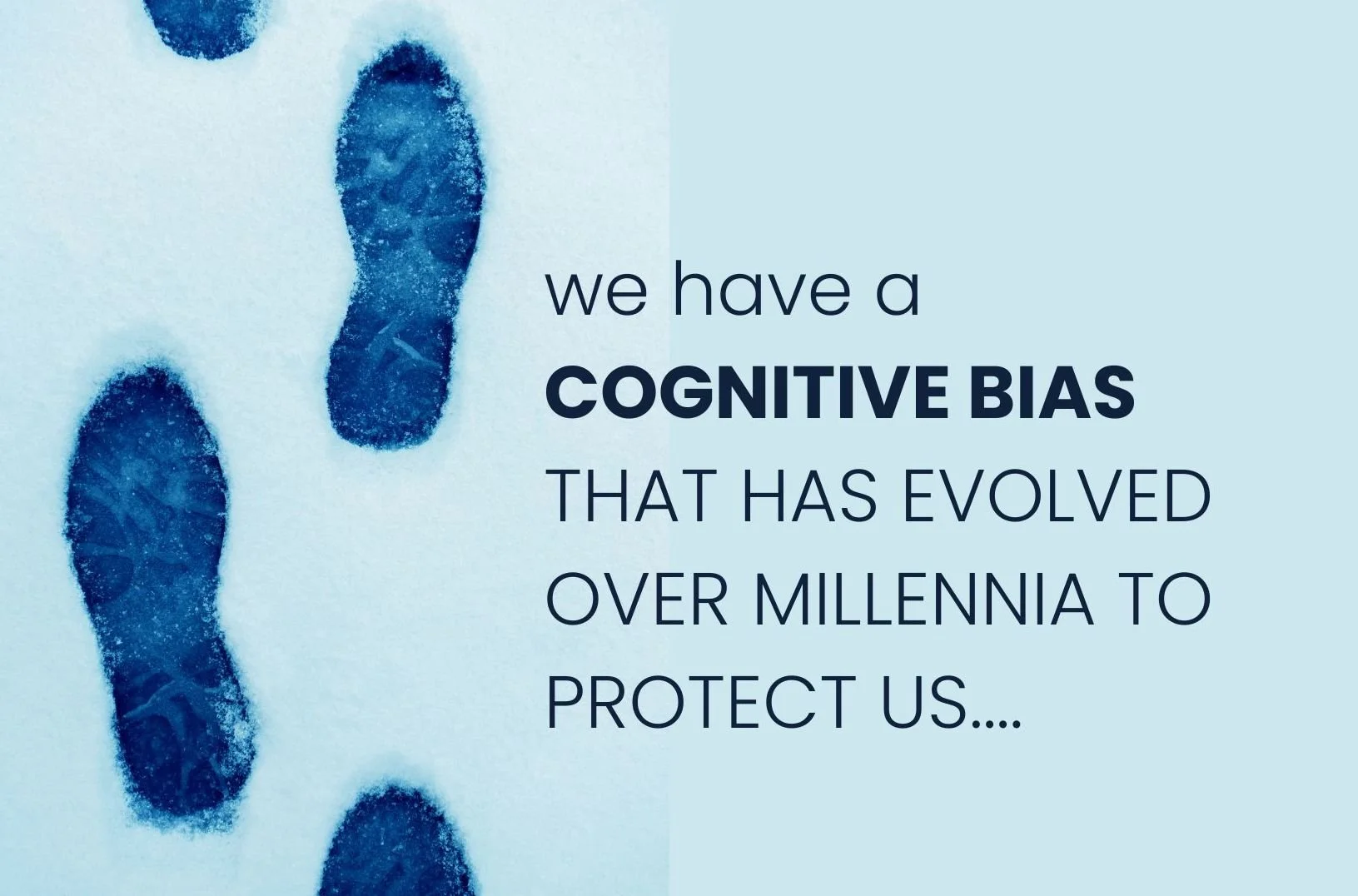Paths in the Snow: A Meditation on Individual & Organizational Change
One of the most important things I have learned through my work in systems change is the value of recognizing patterns from the micro to the macro level - and the relationship between them. This insight extends to grasping the nature of personal and organizational change. Allow me to share a metaphor that captures one such pattern.
We've all encountered negative thought patterns – those counter-productive or unhealthy ways of thinking about ourselves, others, or the world. Similarly, we've found ourselves entangled in habits triggered by certain situations, leading to learned reactions (like my craving for ice cream cake when stressed). These parallels echo our cries for culture change in organizations, as we aspire to break old habits and embrace new, positive behaviors. But why is this so hard?
Imagine your mind as an expanse of fresh snow. Within this mental landscape are various destinations representing different ways of thinking and behaving – both good and bad. The more we think a certain way, or the more we do a certain thing, the deeper/wider the path we create. This means that one way of thinking or one way of doing becomes the easiest way to travel when we are presented with a choice, even if it’s not the most beneficial. Sometimes these paths become ruts so deep that they are hard to get out of. The good news is, that with self-reflection and intention, we can overcome them and forge new, more favourable paths.
Doing something new, acquiring fresh knowledge, or embracing the unknown, equates to venturing into uncharted terrain – a space without pre-existing paths. This isn't the easiest route; it demands effort and might even entail discomfort, like snow in our boots. It’s going to be uncomfortable. But it gets easier over time.
This pattern exists at various levels: neurologically (neural pathways), behaviourally (habits), organizationally (ingrained behaviours), and socio-culturally (path dependence). Importantly, these levels influence one another.
How do we change culture? By creating new paths in our cognitive and organizational snowy landscapes:
Mindset – Recognize that each of us contributes to shaping culture daily. Our actions, reactions, and even inaction collectively create culture, often unconsciously
Intentionality – Deliberately construct the culture we envision. As Alex Ryan has said: “culture changes faster through collaborative project work than through a culture change initiative”. Be the change you wish to see in the system; organize your projects to reflect the future that wants to emerge
Demonstration – Lead by example; actions speak louder than words. Rather than telling people how to change, show the world what change looks like and provide opportunities for others to experience the benefits of different approaches
We can’t let the discomfort prevent us from doing the right thing or the new thing. Innovating is challenging because our cognitive bias evolved over millennia, and pushes us away from the unfamiliar to avoid danger.
But if we aim to innovate, comprehend others' experiences, or devise novel solutions, we must embrace the unfamiliar. This often means changing our mental models, behaviours, relationships and organizational designs. It means choosing not to tread the well-worn path, even when it's the easier route. It means shedding the constraints of path dependence and being willing to get snow in our boots. And that's alright! Boots dry, feet warm up, and new choices emerge.

